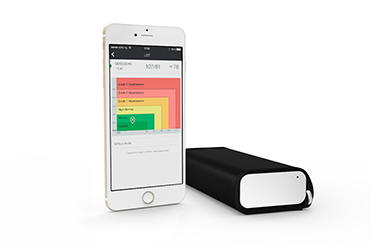Understanding and managing your blood pressure actively may prove to be a life-saving habit, especially if you are over 50 years old or have a family history of heart disease. Learn what your body is experiencing when you suffer from high blood pressure and the risks you are exposing yourself to if it is left untreated.
What is high blood pressure?
High blood pressure, also known as hypertension, is blood pressure that measures with values at 140/90 mmHg or higher over several measurements at rest. High blood pressure is often referred to as the silent killer because it often has no symptoms. Additionally, it increases the chance of heart disease and stroke.
Do you know what is a stroke? Discover more in our article ”What is a stroke and what do I need to know about it?”
How does hypertension occur in the body?
The arteries in your heart are made up of muscle and tissue. Those tissues stretch when the heart pumps blood; The more forceful the blood flow, the more the arteries will have to stretch to accommodate blood flow. If your blood pressure is high, the arteries stretch out excessively and may cause the heart to become stressed. This can cause vascular weakness and scarring, an increased risk of blood clots, and tissue and organ damage, amongst other problems. High blood pressure also increases the risk of heart attack, stroke, kidney failure, angina, and peripheral artery disease. Luckily, there are many things that can be done to help manage blood pressure with the help of your doctor.
What does it mean if I have high blood pressure?
Having high blood pressure means your systolic blood pressure levels are 140 or higher and your diastolic levels are 90 or above. This higher than normal pressure puts extra strain on your blood arteries and heart valves, which increases your risk of organ damage, heart attack, and stroke.
What is very high blood pressure?
A reading above 140/90 mmHg qualifies as high blood pressure that is considered Grade 1 Hypertension. Very high blood pressure is considered Grade 2 Hypertension and is indicated by blood pressure levels at 160/100 mmHg and above. These levels are dangerous and cause to seek immediate medical attention for hypertension treatment.
One in three adults is living with high blood pressure. Knowing your numbers, managing your blood pressure, and following your doctor’s orders are very important as hypertension is a chronic condition – it doesn’t go away but you can still live a long quality life if you keep on top of your heart health. Did you know that QardioArm smart blood pressure monitor was built to detect high blood pressure early? Making it easy to track your heart health every day and share your progress with others, QardioArm charts your blood pressure data so you can easily spot the smallest change. Learn more about smart blood pressure monitoring with QardioArm.
Sources:
Medical News Today
National Heart, Lung and Blood Institute




